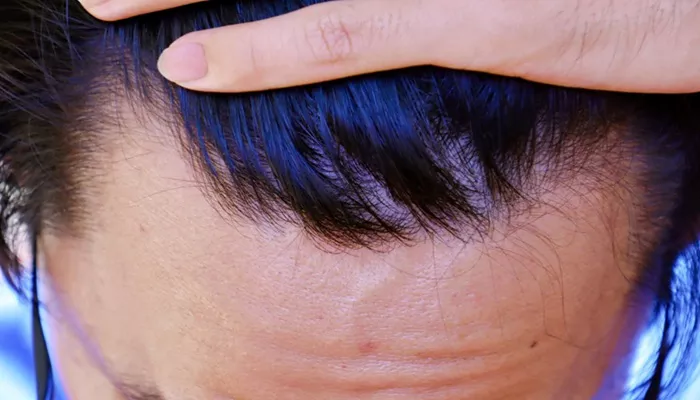A receding hairline can significantly impact one’s appearance and self-confidence. Whether due to genetics, aging, or other factors, hair loss is a common concern for many individuals. Fortunately, modern advancements in hair restoration offer several effective solutions to restore a natural and aesthetically pleasing hairline.
This article will provide a detailed exploration of the various methods, considerations, and steps involved in restoring your hairline.
Understanding Hairline Recession
Hairline recession is a common condition where the hairline gradually moves backward, creating a higher forehead. This can be caused by several factors, including genetics, hormonal changes, stress, and lifestyle factors. Male pattern baldness (androgenetic alopecia) is the most common cause of hairline recession, affecting millions of men and women worldwide.
Causes of Hairline Recession
Genetics: One of the most common causes of a receding hairline is genetics. Male pattern baldness (androgenetic alopecia) is a hereditary condition that affects hair follicles, causing them to shrink and produce thinner hair over time.
Hormonal Changes: Hormonal imbalances, such as those experienced during puberty, pregnancy, or menopause, can affect hair growth and lead to hairline recession.
Aging: As we age, hair follicles naturally weaken, leading to thinner hair and a receding hairline. This is a natural part of the aging process but can be accelerated by other factors.
Stress and Lifestyle Factors: Chronic stress, poor nutrition, smoking, and excessive alcohol consumption can contribute to hair loss and a receding hairline.
Medical Conditions: Certain medical conditions, such as thyroid disorders or autoimmune diseases, can cause hair loss and affect the hairline.
Previous Hair Transplant Surgery: In some cases, a bad hairline may be the result of poorly executed hair transplant surgery. This can lead to an unnatural or uneven hairline that requires correction.
Assessing Your Hairline
Before deciding on a treatment plan, it’s essential to assess your hairline and determine the underlying cause of the issue. A consultation with a qualified hair restoration specialist can help identify the root cause and recommend the most appropriate treatment options.
Degree of Hair Loss: The extent of hair loss and the current state of your hairline will influence the treatment options available to you.
Hair Density: The density of your remaining hair will also play a role in determining the best course of action.
Scalp Condition: The health of your scalp can affect hair growth and the success of any treatment.
Aesthetic Goals: Your personal aesthetic preferences and desired outcome will guide the treatment plan.
Methods to Restore Your Hairline
Hair Transplantation
Hair transplantation is one of the most effective and permanent solutions for hairline restoration. This procedure involves relocating healthy hair follicles from a donor area (usually the back of the head) to the recipient area (the front hairline). The two primary techniques used are Follicular Unit Extraction (FUE) and Follicular Unit Transplantation (FUT).
Hair Systems and Wigs
Hair systems and wigs can provide an immediate solution for a receding hairline. These options come in various styles and can be customized to match your natural hair.
Scalp Micropigmentation
Scalp micropigmentation (SMP) is a non-surgical cosmetic procedure that involves tattooing the scalp to create the appearance of a full head of hair. This can be an effective option for individuals with thinning hair or a receding hairline.
Medical Treatments
Several medical treatments can help slow down hair loss and promote hair growth, potentially improving the appearance of the hairline.
Minoxidil
Minoxidil is an over-the-counter topical solution that has been proven to slow down hair loss and promote hair growth. It is available in various strengths and can be applied directly to the scalp.
Finasteride
Finasteride is a prescription medication that helps reduce the production of dihydrotestosterone (DHT), a hormone that contributes to hair loss. It is available in pill form and has been shown to be effective in slowing down hair loss and promoting hair regrowth.
Conclusion
Restoring your hairline can significantly enhance your appearance and boost your self-confidence. Whether you choose hair transplantation, hairline lowering surgery, medical treatments, or non-surgical options like scalp micropigmentation, there are several effective methods available to address hairline recession. By consulting with a qualified specialist, maintaining a healthy lifestyle, and exploring the available treatment options, you can achieve a more natural and aesthetically pleasing hairline.
If you are concerned about your hairline, it is essential to take proactive steps to address the issue. A consultation with a hair restoration specialist can help you determine the best course of action and guide you through the process to achieve the best possible outcome. Remember, patience is key, as some treatments may take several months to show visible results. With the right approach and care, a more balanced and youthful hairline is within reach.
Related topics:
- Hair Transplant for Lowering Hairline: A Detailed Guide
- Men’s Hairline Restoration: A Comprehensive Guide
- Can You Restore Split Ends


